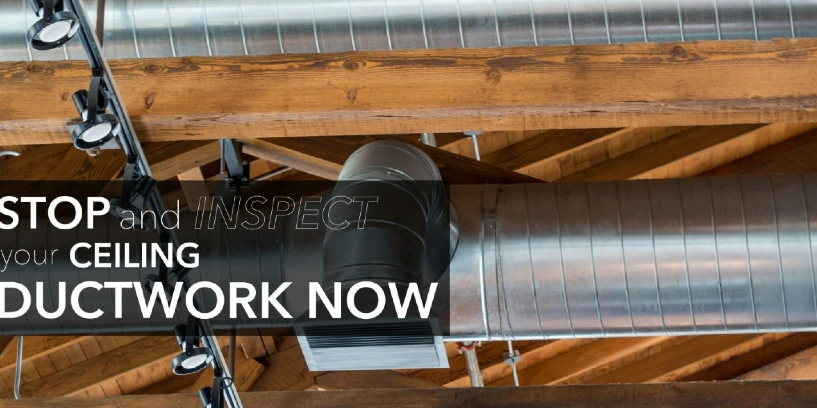
There's no better time than now to inspect your ductwork for any issues that might prevent the HVAC system from running at full capacity. The ceiling ductwork is the easiest to examine, especially if it runs through the attic or above a suspended ceiling. Follow this above-ceiling ductwork checklist to help your heating and cooling system work effectively..
Suspended Ceiling Inspection Checklist
Make sure the ducts are constructed from a suitable material.
Sheet metal, fiberglass, and flexible aluminum tubing are all examples of suitable materials for transporting air around a building. If your system uses the spaces between rafters and floor joists as makeshift ductwork, you’re wasting energy. Install suitable ductwork material to bring your cooling bills down this summer.
Seal ductwork leaks.
Have any sheet metal connections come loose? Are there gaps in the seams? Is your flexible ductwork kinked and torn? Seal gaps and cracks with duct mastic or another approved material to make sure air traveling through the above-ceiling ductwork makes it to its final destination without leaking along the way.
Inspect the condition of duct supports.
Ducts suspended above the ceiling require supports located no more than 10 feet apart. If any supports have come loose, repair them.
Add insulation and other necessary coverings.
Ductwork is more efficient when it’s insulated because the air retains its heated or cooled temperature all the way to the supply registers. If your ceiling ductwork lacks insulation, now’s the time to add it. You may also be interested in an acoustical lining to mute the sound of air as it travels through the ducts.
Check return and supply registers.
These should be open and unblocked by furniture, curtains, or rugs. If you have any unused rooms in your home, you may shut the registers located there. Just be sure to keep at least 80 percent of your home’s supply registers open to maintain the proper system balance.
Consider cleaning the ductwork.
The first sign that you need air duct cleaning is if the return and supply registers are covered in dust and cobwebs. Start by vacuuming these grilles to improve airflow. Then, take a peek inside with a flashlight. If you notice more debris, evidence of a vermin infestation, or offensive odors, consider hiring a professional to clean your ceiling ductwork. Other signs that you should clean your ducts include water damage, mould growth, and frequent bouts of unexplained illnesses or allergies. Keep in mind that fiberglass air ducts need to be cleaned more often than sheet metal.
Get Help Inspecting & Cleaning Your Ceiling Ductwork
If you don’t feel comfortable performing an above-ceiling ductwork inspection, let Aire Serv® handle the job. We can look for signs of trouble and make any necessary repairs just in time for the increased demand of cooling your home in the summer. We also perform air duct cleaning services to remove dust, debris, and other allergens from the ductwork that could be irritating your allergies or decreasing cooling efficiency.
No matter what your heating and cooling needs are, contact Aire Serv today. We can provide you with useful energy-saving tips and perform the necessary services to keep your home comfortable and safe.

